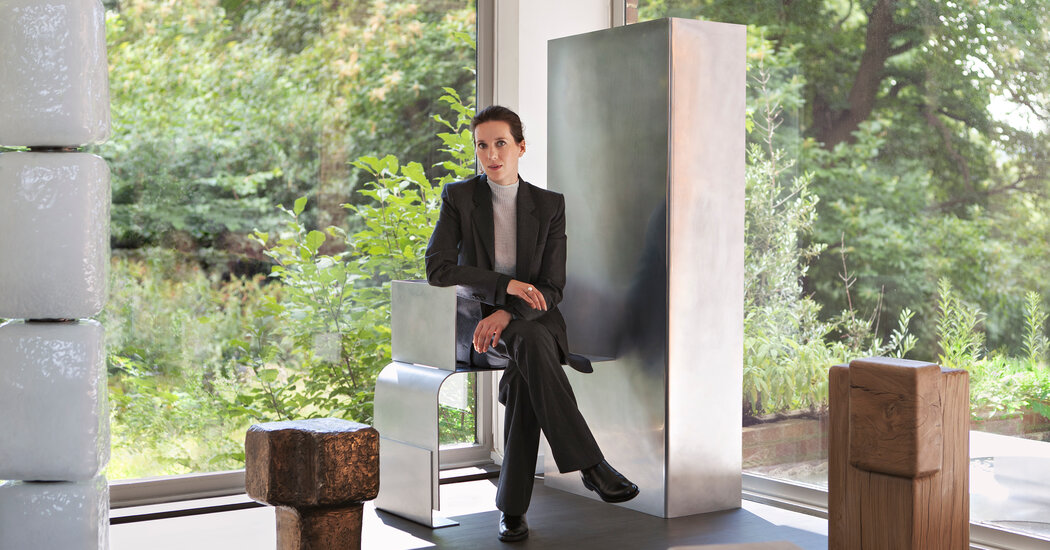T Introduces: Linde Freya Tangelder’s Luminous New Collection for Cassina
In Linde Freya Tangelder’s opinion, great design starts with demolition. “To pull something down or destroy a little bit of the past gives you freedom,” says the 35-year-old Dutch-born designer. Breaking apart her own work and starting over, deconstructing her models and rebuilding them, is, she says, an integral part of her creative process.
So central is the philosophy to Tangelder’s practice that it inspired the name of her nine-year-old studio: Destroyers/Builders, based in Antwerp and Brussels. Here, she creates pieces, many of them limited edition, that feel more like conceptual art or experimental architecture than furnishings — a daybed made of chipboard, an inexpensive building material often used for insulation, is hand-carved with a pitted finish, giving it the appearance of ancient bronze metalwork; a hard-angled chair supported by industrial-looking tubes wouldn’t be out of place in Donald Judd’s studio.
Now, however, she’s also expanding into more commercial furniture. This past spring at Milan Design Week, she presented her first lighting collection for Cassina: Wax, Stone, Light. The three floor lamps and two table lamps are constructed from stacked hollow blocks of Murano glass that Tangelder forms using iron molds to give them a wavy, waxy texture. It’s a follow-up to Soft Corners, a small grouping of ottomans and a side table she made for the company last year that were informed by her study of ancient building techniques.
“Linde has this pure aspect of being poetic and cerebral, but then she takes the hammer and starts banging on stuff. It’s something to see,” says the chief executive officer of Cassina, Luca Fuso, who chose Tangelder as the first recipient of a new initiative called Patronage, which provides funding and technical know-how to fledgling designers. The program has given her the resources to experiment with different materials and approaches (her current projects involve Japanese lacquering, pink limestone and novel varieties of brick).
But although she’s now creating more practical objects, she plans to approach design the way she always has. “I never start by thinking about function,” says Tangelder, who is also working on a new series of collectible furniture for Aequō, an experimental design gallery in Mumbai, India, to be exhibited in 2024. “I think my head definitely works as an artist. For me, it’s all about…
Click Here to Read the Full Original Article at NYT > Travel…
